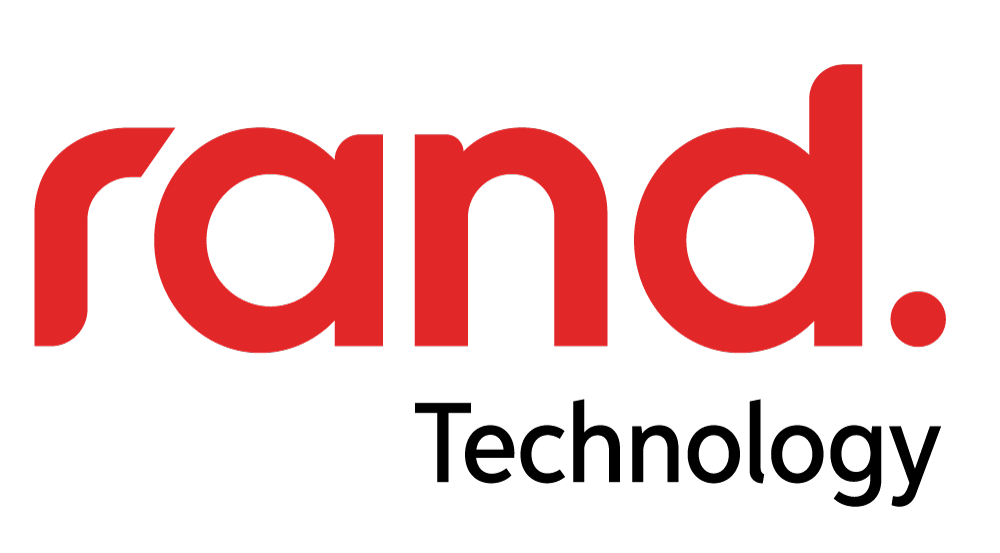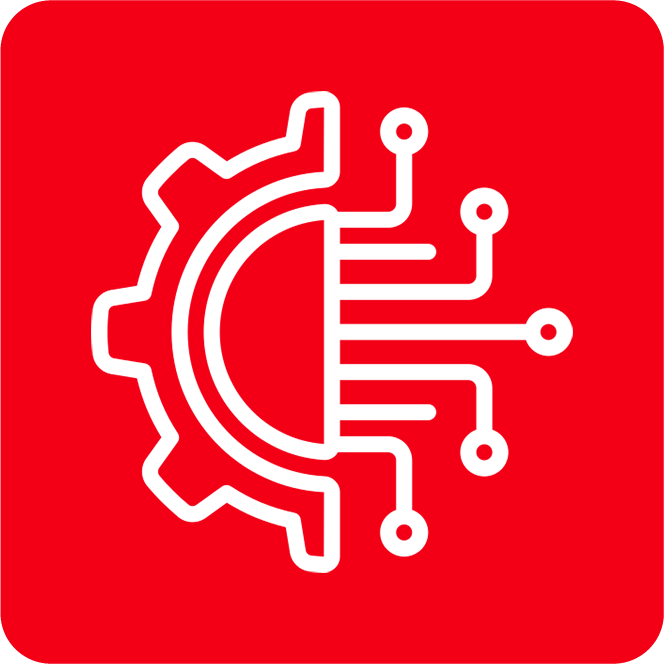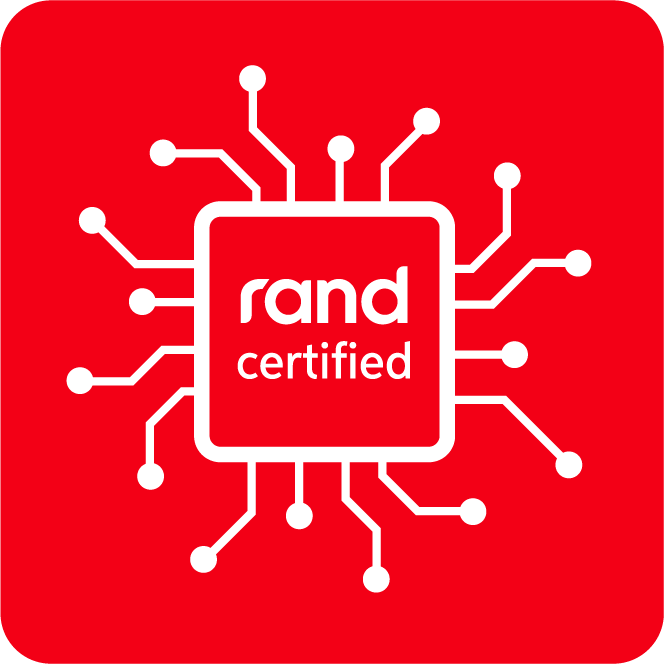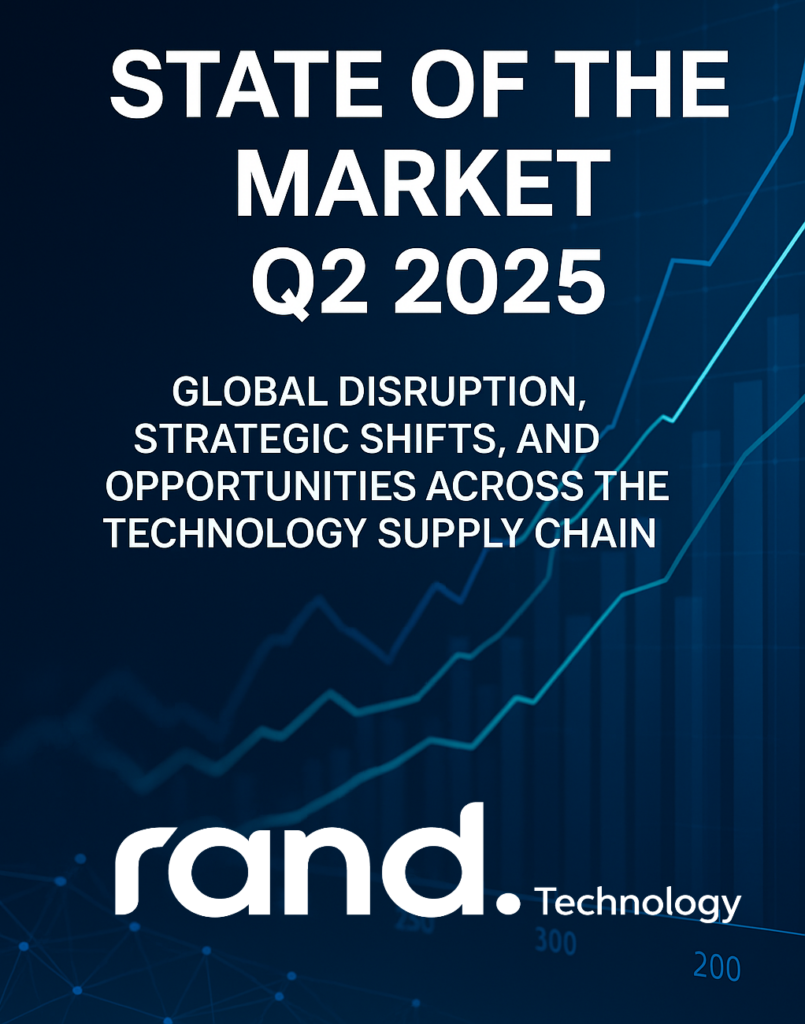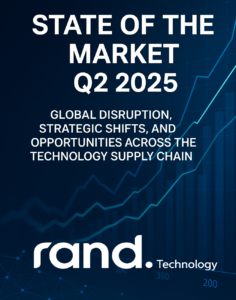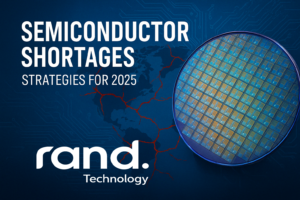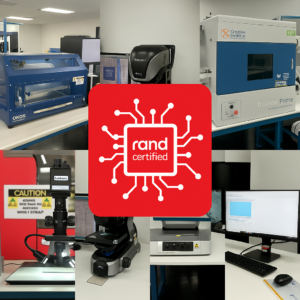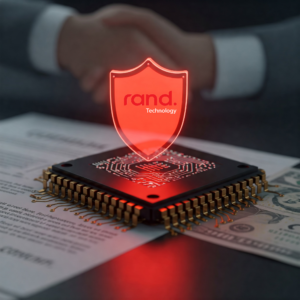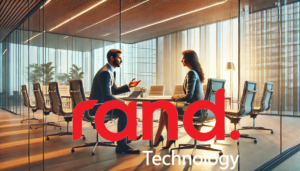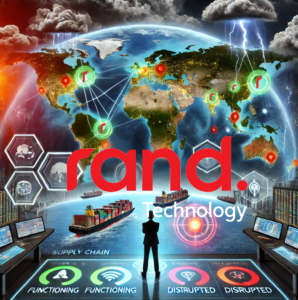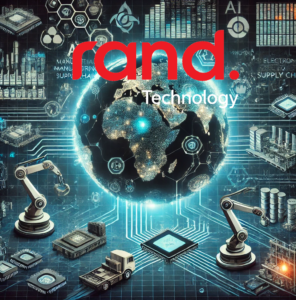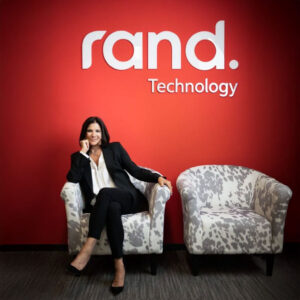The second quarter of 2025 has delivered a storm of developments across the global supply chain, hitting sectors from automotive and semiconductors to data centers and industrial manufacturing. The escalating tariff environment, ongoing shifts in production geographies, volatile consumer demand, and the accelerating pace of AI infrastructure investment are forcing companies to rethink strategy, optimize sourcing, and seek flexible, resilient partners.
At Rand Technology, we’re on the front lines of these shifts, partnering with OEMs, EMS providers, and global innovators to maintain supply continuity, ensure part authenticity, and minimize risk. Here’s a breakdown of the current landscape—and what it means for supply chain decision-makers in the months ahead.
Automotive & Transportation: Tariffs, Tech Transition, and Strategic Recalibration
Cost Pressures Mount as Tariff Impacts Deepen
The U.S. tariff environment continues to rattle the automotive sector. The 25% tariff on Chinese vehicles remains in place, and while some partial duty-free credits on non-Chinese parts are being applied, the net result is stark. According to the Anderson Economic Group, U.S. auto tariffs could cost OEMs between $2,000 and $12,000 per vehicle. These pressures aren’t theoretical—they’re actively reshaping major manufacturers’ strategies and bottom lines.
OEM Reactions Reveal Tactical Adjustments
- Ford saw April U.S. sales rise 16% year-over-year, with hybrid sales spiking 30%, while EVs plummeted 40%. Pricing adjustments are on hold, pending market clarity. The numbers suggest consumers are not abandoning electrification but reevaluating cost, value, and availability. Reuters
- GM cut its 2025 profit outlook due to $4–5 billion in projected tariff exposure, while posting its strongest April retail sales since 2007. That duality—strong consumer interest paired with margin compression—is emblematic of the broader auto sector. Reuters
- Volvo announced a $1.87 billion cost-cutting plan after slashing its earnings guidance. Its strategy includes U.S. restructuring, underscoring the geographic rebalancing many OEMs are now pursuing to minimize tariff risk and supply chain disruption. Reuters
- Valeo, meanwhile, has accelerated its USMCA realignment. Now 90% of its output in Mexico qualifies under the agreement, and the company is passing 75% of its tariff costs on to customers. This highlights how Tier 1 suppliers are coping by regionalizing production and pushing costs downstream. AJOT
Chinese OEMs Pivot to ICE and PHEV in Europe
In Europe, Chinese manufacturers such as MG and Chery are shifting their focus from BEVs to PHEVs and ICE vehicles, an attempt to sidestep EU carbon-based tariffs. However, this strategy may clash with EU emissions goals, and it’s driving an uptick in Chinese investment in European manufacturing capacity to create a compliant, tariff-insulated footprint. DigiTimes
BYD Surges, Batteries Boom
Globally, BYD sold over 380,000 NEVs in April, a 21% year-over-year increase. Battery installs soared 111%, and international sales hit a new high. This signals that while some OEMs struggle under regulatory and cost burdens, others are capitalizing on the global appetite for energy transition, especially in markets where tariff pressure is less acute. WSJ
Datacenter & Cloud: Mixed Signals, Maximum Investment
Hyperscalers Outpace Expectations—Barely
- AWS grew 16.9% year-over-year in Q1 but fell slightly short of Wall Street targets. MarketWatch
- Microsoft Azure exceeded expectations with 33% growth, driven more by non-AI workloads than anticipated. CNBC
- Google Cloud saw 8.5% ad growth, with AI integration driving engagement. Google’s “AI Overviews” now reach 1.5 billion users monthly. Reuters
While growth continues, it’s clear that the market is entering a new phase: one of optimization rather than aggressive expansion. Capex remains high—Microsoft’s 53% increase is focused on short-lived, AI-specific infrastructure—but results suggest customers scrutinize every dollar spent.
Super Micro Warns on AI Inventory
Super Micro, a key player in AI infrastructure, cut its Q3 guidance due to inventory buildup and customer delays. This serves as an early warning: while AI remains a high-growth area, the pace of infrastructure deployment may not match investor enthusiasm in the short term.
Flex Scales Up U.S. Manufacturing
Flex’s decision to expand U.S. production capacity by over 500,000 square feet, specifically for data center power components, underscores the geographic diversification trend. Suppliers are following suit as customers demand speed, security, and proximity.
Semiconductors: Political Headwinds, Innovation Tailwinds
Policy and Geopolitics Shape the Chip Sector
Governments are doubling down on national self-sufficiency. The proposed BASIC Act would raise chip investment credits to 35% and extend them for four more years, bolstering U.S. efforts to secure domestic capacity.
Meanwhile, auditors have labeled the EU’s dependence on Chinese legacy chips “high-risk,” threatening its goal of reaching 20% global market share by 2030. Regulatory focus is tightening, and companies are bracing for a tougher compliance environment.
OEM Strategies: Diversify, Partner, Accelerate
- Nvidia is sticking with its existing “Bianca” architecture for its GB300 platform to speed rollout, scrapping a redesign in favor of time-to-market. It’s a clear signal: speed trumps perfection in the AI arms race.
- Intel unveiled new partnerships at the Shanghai Auto Show to advance ADAS and in-cabin systems, reinforcing its commitment to the smart vehicle segment.
- Texas Instruments and NXP are both doubling down on automotive chip portfolios, with TI announcing support for Level 3 and 4 autonomous features. Short-cycle orders, which had slowed in 2024, are showing early signs of stabilization.
- Sony, facing pressure from cyclical volatility, is weighing a $49B spin-off of its semiconductor unit, potentially unlocking shareholder value while mitigating exposure.
- Xiaomi is launching its own 4nm SoC, “Xuanjie,” a move that cuts reliance on Qualcomm and MediaTek while aligning with Beijing’s push for domestic IP.
Materials & Equipment: Down Now, Up Later
According to SEMI, silicon wafer shipments rose 2.2% year-over-year in Q1 but fell 9% sequentially. While this might suggest a softening cycle, demand is expected to rebound in late 2025 as inventories normalize and capacity expansions go live.
Industrial & Manufacturing: Reshoring, Retrenching, Rebalancing
Japan’s Output Falters
Japan’s industrial production fell 1.1% year-over-year in March due to auto-related export declines. U.S. tariffs on Japanese vehicles and components exacerbate the slowdown, leading Japanese OEMs and Tier 1s to reconsider North American manufacturing investments.
Inventec Builds in Texas
Inventec is investing $85M in a new server production facility in Texas, joining a wave of Taiwanese manufacturers moving capacity stateside. The aim is to reduce geopolitical risk, gain proximity to cloud customers, and align with CHIPS Act funding priorities.
Consumer & Trade: Shifting Flows, Stealth Policies, and Souring Sentiment
Apple Bets on India to Avoid Tariffs
Apple’s plan to shift more than 80 million iPhones annually from India to the U.S. by 2026 is more than a supply chain adjustment—it is a strategic hedge against U.S.-China decoupling. Tariffs, export controls, and political risk are all accelerating this pivot.
China’s Quiet Concessions and Strategic Retaliation
While Beijing has held off on formal retaliation for the latest round of U.S. tariffs, it has quietly implemented a “whitelist” exempting key U.S. goods, including microchips and pharma products, from 125% tariffs. The message is clear: China wants to sustain access to strategic technologies while applying pressure where it hurts politically.
Port of LA Faces Historic Drop
The Port of Los Angeles expects China-linked cargo to drop by 35% next week due to retailer shipment freezes. Officials forecast at least a 10% drop in total import volume in the second half of 2025. These disruptions affect retail and cascade through component supply chains, customs cycles, and contract manufacturing schedules.
New Port Fees Signal Further Fragmentation
Starting in October, the U.S. will impose port fees on Chinese-built or -operated vessels. The policy aims to boost domestic shipbuilding and counter China’s maritime dominance. Still, the near-term impact will be increased freight volatility and accelerated rerouting strategies among major shipping companies.
Global PMI Trends: A Snapshot of Divergence
- U.S. Manufacturing PMI fell to 48.7 in April, marking the second month of contraction and hitting a five-month low. Factory-gate inflation is rising again due to tariffs, and component buyers are scrambling to reassess sourcing plans.
- China’s PMI dropped to 49.0, its sharpest decline in 16 months. New U.S. tariffs weakened export orders significantly. However, Chinese officials have signaled no intent to negotiate on trade terms.
- Europe’s HCOB Manufacturing PMI rose slightly to 49.0 in April, its highest reading in nearly three years. Gains were seen in Germany, France, and Italy, although job cuts and cautious sentiment persist. The data suggests a slow but steady path to recovery, albeit under trade pressure.
Rand’s Perspective: Stability Amid Uncertainty
These data points underscore what we’ve long known: markets are volatile, geopolitical risk is the new norm, and supply chains must be built for agility.
At Rand Technology, we offer:
- Strategic Sourcing: Real-time market data, global supplier relationships, and deep component expertise help you navigate disruptions before they become emergencies.
- Component Engineering & Lifecycle Support: We optimize BOMs, offer second-source strategies, and support redesigns when part availability or pricing shifts.
- Counterfeit Mitigation & Rand Certified Quality: Our globally certified facilities and engineers test, verify, and support every part we deliver.
- Surplus Management & Scheduled Delivery: Whether you’re facing excess inventory or planning for a long-term rollout, we design programs that reduce waste, secure supply, and control costs.
The Right Partner, Not Just a Product
As the global economic order reshuffles, the decisions you make today around sourcing, supplier selection, and supply chain architecture will define your resilience for years to come.
Whether confronting tariffs, seeking new partners, or trying to stabilize production, Rand Technology is ready to help you turn complexity into a competitive advantage.
Unlocking the Flow of Technology, Rand is Your Trusted Supply Chain Solution Partner.
